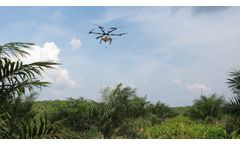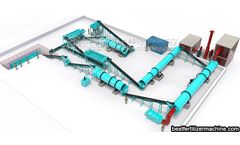Agriculture Through Pathway Analysis Articles & Analysis
30 articles found
Food is essential to our daily life. Both producers and consumers want food to be safe. However, in order to improve food production, pesticide/herbicide is widely used in agriculture. Over-use of pesticides can lead to hazardous chemicals entering the food chain. Therefore, much concerns have been raised about the risks of pesticide residues in food, because most pesticides show a high degree of ...
The concept of crop rotation dates back thousands of years, with ancient civilizations such as the Mesopotamians and Egyptians employing rudimentary forms of rotation to sustain their agricultural endeavors. The basic principle behind crop rotation is alternating the types of crops grown in a particular field over time to improve soil fertility, control pests, and maximize yields. In traditional ...
Agribusiness, also called agribiz or agricorps, is the business of agricultural production. Agribusiness is responsible for many economic aspects of food production, including seed and fertilizers, pesticides and herbicides, livestock feed, processing plants, and machinery used to harvest grain crops. Agribusiness can be considered a subset of the "business industry" that deals with food and ...
NPK production line can process different chemical fertilizers to obtain agricultural special crop compound fertilizer. NPK fertilizer granulation process can be generally divided into: raw material batching, NPK fertilizer mixing, compound fertilizer granulation, particle drying, particle cooling, particle grading, finished product coating and final product packaging. Processing technology of ...
Worldwide, water scarcity threatens delivery of water to urban centers. Increasing water use efficiency (WUE) is often recommended to reduce water demand, especially in water-scarce areas. In this paper, agricultural water use efficiency (AWUE) is examined using the super-efficient data envelopment analysis (DEA) approach in Xi'an in Northwest China at a temporal and spatial level. The grey ...
Rainfall analysis is essential for agricultural crop planning and water resources management, especially under water scarcity conditions. The 36 years (1977–2013) of rainfall data for Kharagpur were analyzed for characterization of different seasonal events. The Weibull's formula predicted the probability of mean onset on 23rd standard meteorological weeks (SMW) (3rd–9th June) and withdrawal ...
A recent survey of over 6,000 public and private sector leaders in 21 countries reveals strong confidence in sustainable growth opportunities during 2015. The Global Opportunity Report from DNV GL, UN Global Compact and Monday Morning Global Institute / Sustainiaidentifies five major global risks — the lack of freshwater, unsustainable urbanization, continued dependence on fossil fuels, ...
ByEnsia
The scene plays out in India. At a reception, I met the head of Indian operations for Esso (now ExxonMobil). When I asked him how business was, he said it was great. In particular, diesel sales to fuel irrigation pumps were nearly double the previous year’s level. Why? Because farmers were pumping continuously to try to save their crops. Soon after, I met an embassy staff person, an avid ...
This study presents the Yuqiao Reservoir Water Quality Model (YRWQM), a three-dimensional hydrodynamic and water quality model of the Yuqiao reservoir, China. The YRWQM was developed under the environmental fluid dynamics code (EFDC) model and was calibrated and verified to hydrodynamic and water quality data, using two sets of observed data from January 1 to December 31, 2006 and from May 1 to ...
The impacts of water shortages on Egypt's agriculture continues to receive widespread attention. Several mitigation schemes have been proposed to reduce the potential economic impact of supply reductions of the Nile's waters into Egypt. This paper examines the economic consequences for the Egyptian agricultural economy of application of limited water markets to mitigate the ...
Agricultural biotechnology is expanding around the world, but societal acceptance remains an important issue. Michigan State University (MSU) has developed and implemented an agricultural biotechnology short course for developing countries. Four courses were taught to regional groups in 2002–2003 and eight more were taught to geographically diverse groups in 2004–2008. One half day of each course ...
This application demonstrates the usefulness of SPME in the low-level extraction of agricultural pesticides from wine, and the use of the SLB-5ms in the subsequent analysis. The pesticides chosen for the analysis represent a group of insecticides and fungicides that could be found in commercial wines. These compounds contain a variety of polar functional groups, and the polyacrylate fiber ...
Agriculture is having an increasing impact on water resources in Spain, both from a quantitative (consumption) and qualitative (pollution) perspective. Therefore, the implementation of the Water Framework Directive (WFD) will have a great impact on this sector. In fact, new river management plans aim to reduce these pressures through the implementation of programmes of measures. These instruments ...
Using statistical matching techniques, economists can now create attribute rich datasets by matching across the common variables in two or more datasets. The farm level spatial microsimulation model developed in this paper uses one of many combinational optimisation techniques – simulated annealing – to match the Irish Census of Agriculture to the 2005 Irish National Farm Survey (NFS). Using the ...
The expectations on Multifunctionality of Agriculture (MFA) in China and Finland are compared through cross-table and factor analysis methods based upon surveys with 62 Chinese and Finnish experts. The results indicate that two of the elements have no significant difference, and the other four elements exhibit statistically significant differences. Further, we can infer that MFA in China is ...
Stewardship programs are an important element of agroecosystems management. These programs are confronted with the difficult challenges of demonstrating their positive impacts on the environment. This paper argues that under the precautionary principle, evaluation of stewardship programs should be aimed at identifying risks mitigated, as opposed to actual changes in environmental conditions. The ...
This paper builds on the outcomes of a state-of-the-art review of research for the European research project MULTAGRI, with a particular focus on the conceptualisation of Multifunctional Agriculture (MFA) from a 'supply side' perspective. It argues that a consistent and satisfactory conceptual framework for studying the supply of MFA at farm and territorial level is still largely lacking and ...
This paper discusses and empirically analyses the implications of efficiency and innovation offsets for the management of non-point source pollution from agriculture. If efficiency improvements and green innovation indeed combine environmental advantages with economic advantages, these offsets would offer a free lunch adjustment to environmental regulations. A theoretical model of the farm is ...
This application illustrates the analysis of 29 different agricultural pesticides of different classifications and functionalities, using the SLB-5ms, 30 m x 0.25 mm I.D., 0.25 μm The analysis was done by GC-MS using selected ion monitoring (SIM) to allow detection of all compounds at 100 µg/L. The standard solution was made in toluene to increase it stability and enhance response of ...
This paper investigates both efficiency and redistributive effects of the recent reform of Common Agricultural Policy in Italy. A general equilibrium model has been calibrated on a social accounting matrix of the Italian economy, adapted to represent the distribution of agricultural income between households. In simulation results the decoupling of farm support proves to be a welfare-improving ...









